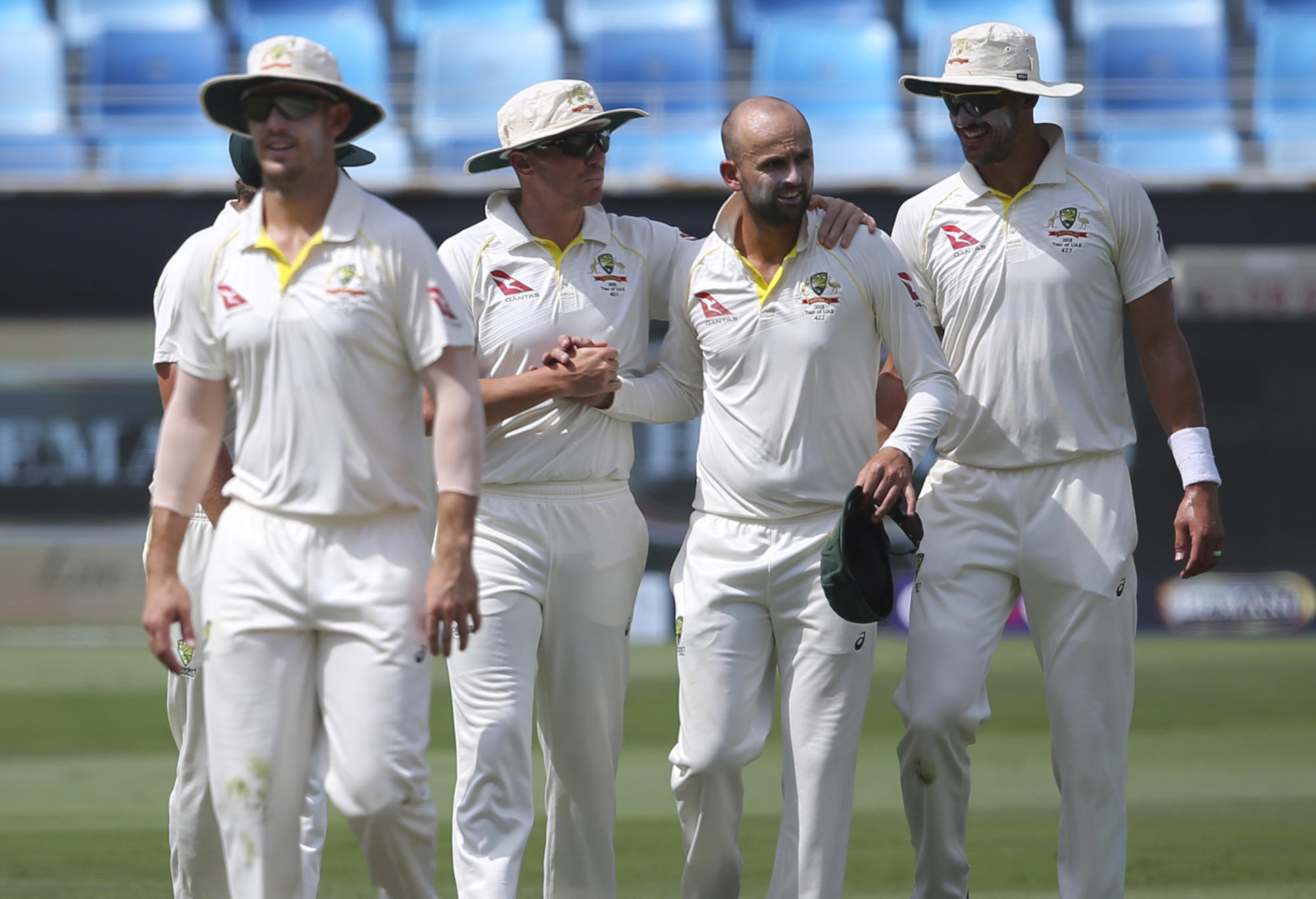Justin Langer’s approach to the Australian coaching role since May has been met in some quarters with a strong dose of scepticism.
Rhetoric-heavy, the former opener has prescribed ‘elite mateship’, ‘character over cover drives’ and ‘banter’ (rather than sledging) for his new side. It didn’t wash with those too angry, hurt and frustrated from events earlier this year. The public was done with spin, and the cynicism radar was touchier than ever.
Langer had to put some flesh on the bones, a performance to support the statements. And after a slow start, he did exactly that by orchestrating a famous draw in the first test against Pakistan in Dubai.
A coach’s true influence in modern cricket is debated, but Langer’s fingerprints were all over Australia’s gutsy draw. And what is wholly apparent is that Australia’s 140-over batting performance with a skeleton side would not have happened under Darren Lehmann.
First, Langer’s influence on the heroic Usman Khawaja in the lead-up to the series was considerable. Prompting the Queenslander to adopt a stringent fitness regime, the results were immediate – a frame seven kilos lighter and a mentality to persist when things got hard.
“I know the expectations, and I know where I stand,” Khawaja had said. It was also reported that Langer was shocked at the fitness levels of players after Lehmann departed.
Khawaja’s incredible 302-ball knock of 141 in the oppressive Dubai heat would not have been possible without his drastically improved conditioning, which enabled him to bat through periods where his whites were, as he claims, soaking wet.
The conditioning itself would not have happened without Langer.

(AP Photo/Kamran Jebreili)
Similarly, Aaron Finch has professed to be in the best shape he’s ever been in. The pair’s opening stands of 142 and 87 are in part attributed to a new level of fitness.
For all the (justified) talk of conditioning, the skill level to bat 140 overs on a wearing pitch, ball spinning and spitting at batsmen surrounded by baying fieldsmen has perhaps been under-referenced.
Khawaja, Tim Paine and Travis Head’s navigation of Yasir Shah and Bilal Asif, as well as the wily reverse-swing of Mohammad Abbas, took tremendous skill. From the outside looking in, Langer’s influence appears substantial.
His on-field coaching session following stumps on Day 3 – derided by Ian Chappell as something you do ‘before the game’ – was in fact praised by the batsmen as beneficial. Langer’s tutorial addressed the way the team’s left-handers played the dangerous Bilal Asif, who picked up six first-innings wickets on debut. It worked – Bilal went wicketless from 37 second-innings overs.
This contrasts greatly with the lack of skills Lehmann reportedly possessed as a coach. Gideon Haigh’s recently released book Crossing the Line includes interviews with 50-plus players, coaches and officials as part of a ‘shoestring’ cultural review of Australian cricket. In it, one player was particularly critical:
“I love Boof. He’s got a great heart and he loves the players. But, really, he hardly coached technique at all. ‘You’re struggling? Just whack it.’ ‘You’re going for runs? Just bowl yorkers.’ ‘We’ll smash them.’ He really just had no answers but to try and built up this arrogance.”
Australia’s shelving of the ‘play your natural game’ mantra is exactly what enabled it to draw the test in Dubai. Were Langer to have told Travis Head to play naturally, the 24-year-old would have faced far fewer balls than the 197 he expertly absorbed.

(AP Photo/Kamran Jebreili)
Perhaps most pleasing is that Australia has had far better XIs which have failed to bat out the final day of a Test match. Where victory became improbable or impossible, stronger teams of the past have succumbed when the going became tough. The fact that this ragtag side, missing four players who would have otherwise been selected, stood up is all the more impressive.
While Langer and the selectors erred in failing to pick Glenn Maxwell, the coach at least deserves credit for the success story that was Travis Head in Dubai.
On a final note, while it is far too early to adjudge any sort of improvement in on-field demeanour in the Australian side, certain behaviours moved in the right direction. Mitchell Starc, naturally fiery but an ugly extension of himself in the final months under Lehmann, was decidedly calmer. The stare-filled abuse that would usually follow a play-and-miss was not apparent. Marnus Labuschagne brought enthusiasm and smiles in his debut, not artificial intimidation.
Again, one Test match doesn’t heal the considerable wounds of the past, but the demeanour displayed is a step in the right direction. The obvious respect shown by Paine and the ever-classy Sarfraz Ahmed in post-match interviews was warming to Australian fans more accustomed to superficial appreciation in recent times.
The Dubai draw is not, on the surface, an earth-shattering result. But the belief it will garner is far from insignificant. The skills and temperament displayed by the Australians typify the strength of Langer as a coach and underlines the progress Australia can now make with a new man in charge.






























































































